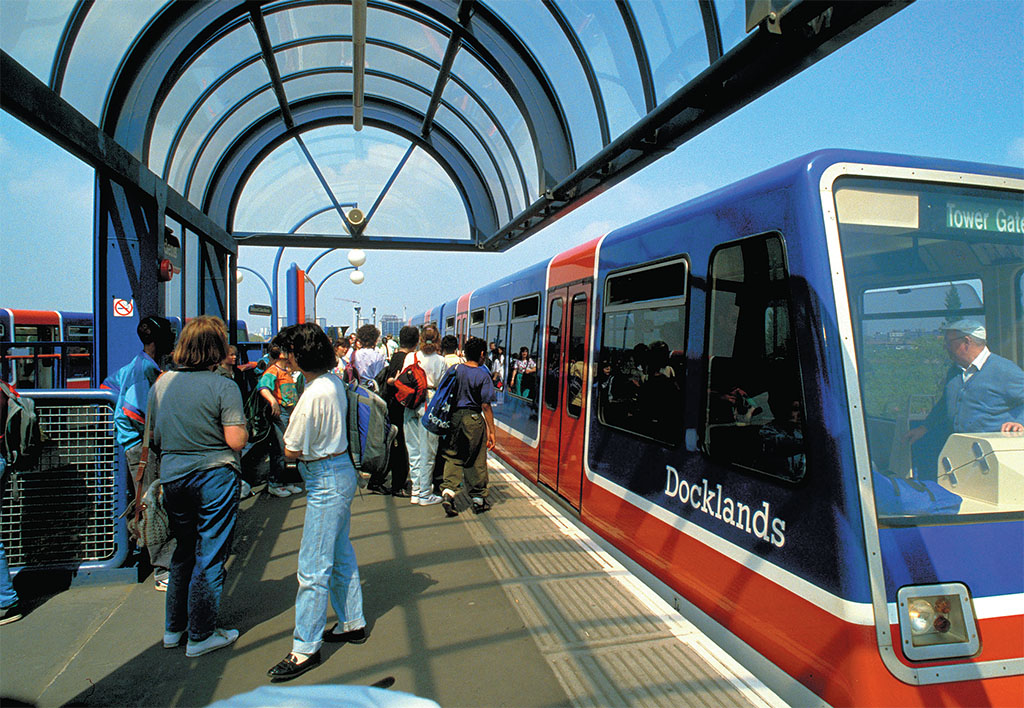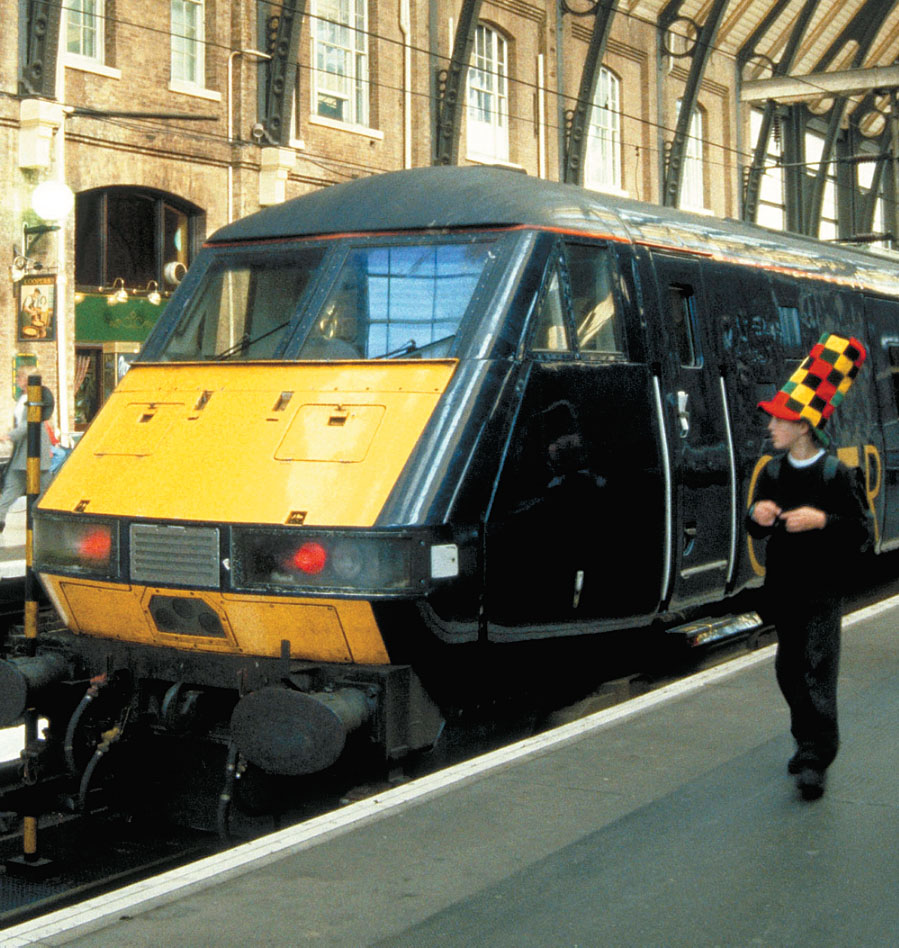
With petrol at &doller;8 a gallon, trains have never been so appealing
[caption id="BritishTrainsDeliverforVisitors_Feature" align="aligncenter" width="1024"]

BRITAINONVIEW
THIS IS NO TIME to take to Britain’s roads, as the country’s ribbons of tarmac have never been busier. Town centers are clogged, and the highways between urban areas are lineal car lots much of the time. With gasoline at around &doller;8 a U.S. gallon and rising, and parking that can cost &doller;10 an hour, car travel has lost its sparkle. No question these days, trains are the way to go.
Britain’s considerable passenger rail network connects castle, coast and city. Mainlines radiate from London and connect with all metropolitan areas and towns, and branch lines meander into some of the more remote and beautiful areas, many of which are very car-unfriendly and hard to reach.
Though we love to complain about them, 21st-century trains are important and efficient. Even local stations in small towns can boast six passenger platforms, and many areas have access to almost round-the-clock services. Passengers travel in multimillion-pound trains that offer the latest in luxury and comfort even in coach class as the countryside glides past.
The steam heritage business is big in the UK, with many tourist lines puffing away every summer, pulling Victorian coaches full of industrial history buffs. Nevertheless, the modern rail industry has left the steam age far behind. It has no time for coal in the firebox, looking instead to WiFi and cappuccinos on 125 mph trains operated for people who have to get to places quickly.
Unlike the rest of Europe and the United States, passenger services are not supplied by a national operator such as Amtrak or SNCF. Instead, many individual companies offer services, sometimes competing over the same lines. Each of these companies has Web sites on which tickets can be bought and information accessed. One of the most famous brands, Virgin Rail, operates intercity services between London, the Northern centers of Liverpool and Manchester as well as Scotland.
VISITORS TO THE UK can take advantage of the well-established Britrail Pass, which gives unlimited train travel throughout the network for a given period of time. If you are traveling around the country much, this is absolutely the best travel value going. For those who are based in a single location, though, it may be better value to purchase tickets for individual trips.
Despite what sometimes seems a bewildering selection of tickets available at the ticket window, there are three main ticket types to choose from: fully flexible (open), which can be used on any train, any time and is usually expensive; off-peak flexible (saver), which is generally available only for travel after 9:30 a.m.; and inflexible (advance saver), which is valid only on specific trains and must be booked by 6 p.m. the night before. For day trips, the traveler can buy one-day return tickets. Off-peak day returns, purchased after 9:30 a.m. are the best value and allow more time in bed.
But what if that bed is actually on a train? Two long-distance, overnight sleeping trains carry passengers to the Scottish West Highlands or the rare beauty of the Devon and Cornwall peninsula. The Caledonian Sleeper from London to Fort William leaves Euston station at 9 p.m. and arrives in the glorious Scottish Highlands at 9:45 a.m. As you wake, the train traverses some of the most stunning countryside Scotland has to offer. From Fort William there is a connecting service to Mallaig, a small fishing port and ferry terminal for Skye. This train is known as the Deerstalker. Regular fares start at around &doller;200 return.
THE NIGHT RIVIERA SLEEPER, to the far Celtic corner of the English mainland, leaves London at 11:45 p.m. and arrives in Penzance at 8 a.m. The service is available as a supplement to a regular, with charges starting at $90 for first-class travel.
For those who hanker for rail travel truly out of the ordinary, there can be no greater name than the Orient Express. This modern incarnation is firmly dedicated to deluxe travel and hospitality in its many forms. Orient Express operates three trains in Britain—the British Pullman, composed largely of Pullman cars from the 1920s and 1930s; the Northern Belle, which harks back in design to the “land cruise” trains that were a feature of interwar railway travel; and the Royal Scotsman, which carries just 36 passengers for anything from a one-night “Wee Dram” to a seven-night tour, taking in the best of Scotland’s railway lines and sights.
< [caption id="BritishTrainsDeliverforVisitors_img1" align="aligncenter" width="899"]

BRITAINONVIEW
Highlights of the 2008 summer program of day trips operated by Orient Express include taking the British Pullman from London to Leeds Castle for a performance of Shakespeare’s The Winter’s Tale in early July. Prices start at around &doller;700. Later in the summer, the British Pullman visits the Jane Austen Festival, taking the scenic route to Bath, for around &doller;620. Opera lovers based in the Midlands could travel by the Northern Belle from Birmingham to a night at the opera in Buxton in mid-July.
The magnificent redevelopment of St. Pancras International last year welcomes the new High Speed One rail line from Paris and Brussels. The vaulting vastness of the train shed, which was the largest railroad station in the world when it was built, has what is claimed to be the longest champagne bar in the world, apt for those who might then board the train to travel to Champagne.
Despite having a budget of &dollre;1.6 billion for the restoration, the station suffered a hesitant start, with some facilities struggling to match the official opening date back in November. During this year, the station’s owners hope the farmers’ market, high-end retailers, restaurants and the champagne bar will make the city center station a destination in its own right.
A key ingredient of the restoration of George Gilbert Scott’s marvelously evocative station buildings and old Midland Grand Hotel has been the inclusion of a brace of statues that grace the St. Pancras concourse and are virtually certain to become reliable London landmarks.
The largest, a striking 30-foot bronze sculpture called The Meeting Place by Paul Day, is an enigmatic display of a couple who might be separating, might be reuniting. The second, a more modest bronze by sculptor Martin Jennings, is a memorial to Sir John Betjeman, who championed St. Pancras station throughout the 1960s and ’70s when its Victorian elaborate neo-Gothic architecture had fallen so far out of fashion. Then, serious consideration was given to demolishing it; now, such a thought would be all but unimaginable.
Whether beneath the burnished arches of St. Pancras or on a narrow platform in a Yorkshire village, this is the age of the train.





Comments